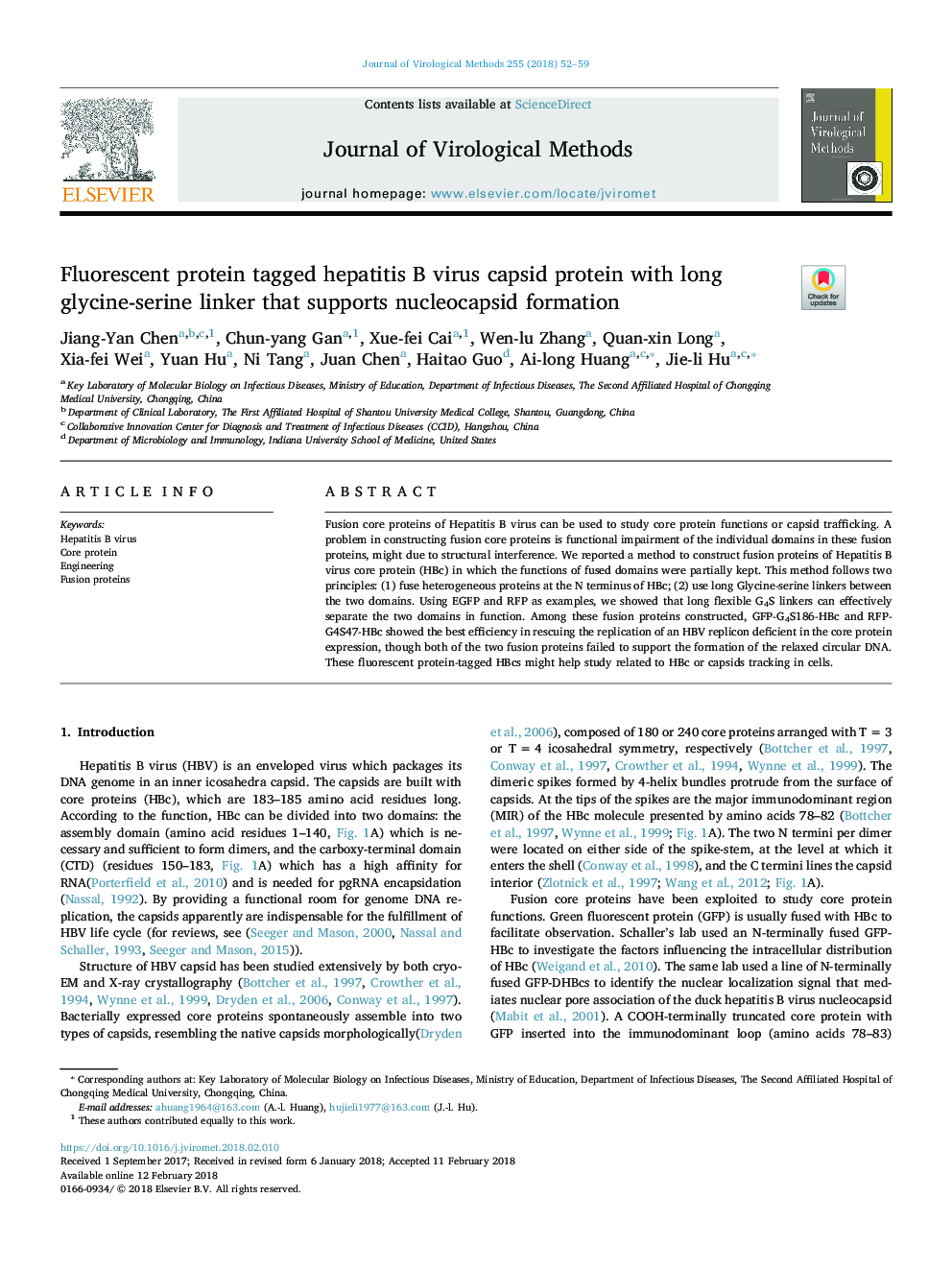| Article ID | Journal | Published Year | Pages | File Type |
|---|---|---|---|---|
| 8747086 | Journal of Virological Methods | 2018 | 8 Pages |
Abstract
Fusion core proteins of Hepatitis B virus can be used to study core protein functions or capsid trafficking. A problem in constructing fusion core proteins is functional impairment of the individual domains in these fusion proteins, might due to structural interference. We reported a method to construct fusion proteins of Hepatitis B virus core protein (HBc) in which the functions of fused domains were partially kept. This method follows two principles: (1) fuse heterogeneous proteins at the N terminus of HBc; (2) use long Glycine-serine linkers between the two domains. Using EGFP and RFP as examples, we showed that long flexible G4S linkers can effectively separate the two domains in function. Among these fusion proteins constructed, GFP-G4S186-HBc and RFP-G4S47-HBc showed the best efficiency in rescuing the replication of an HBV replicon deficient in the core protein expression, though both of the two fusion proteins failed to support the formation of the relaxed circular DNA. These fluorescent protein-tagged HBcs might help study related to HBc or capsids tracking in cells.
Related Topics
Life Sciences
Immunology and Microbiology
Virology
Authors
Jiang-Yan Chen, Chun-yang Gan, Xue-fei Cai, Wen-lu Zhang, Quan-xin Long, Xia-fei Wei, Yuan Hu, Ni Tang, Juan Chen, Haitao Guo, Ai-long Huang, Jie-li Hu,
